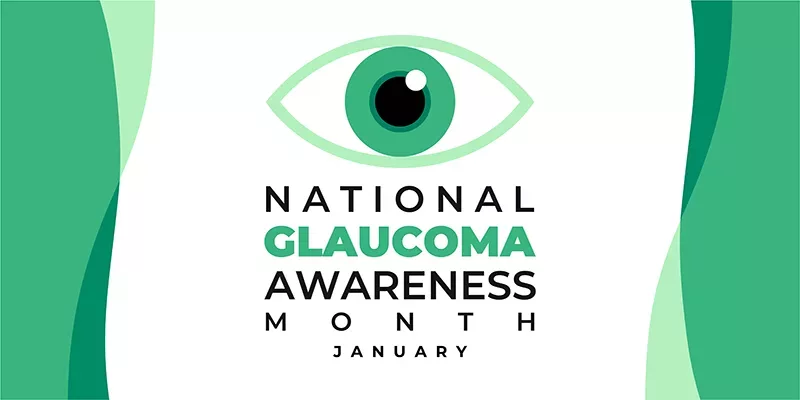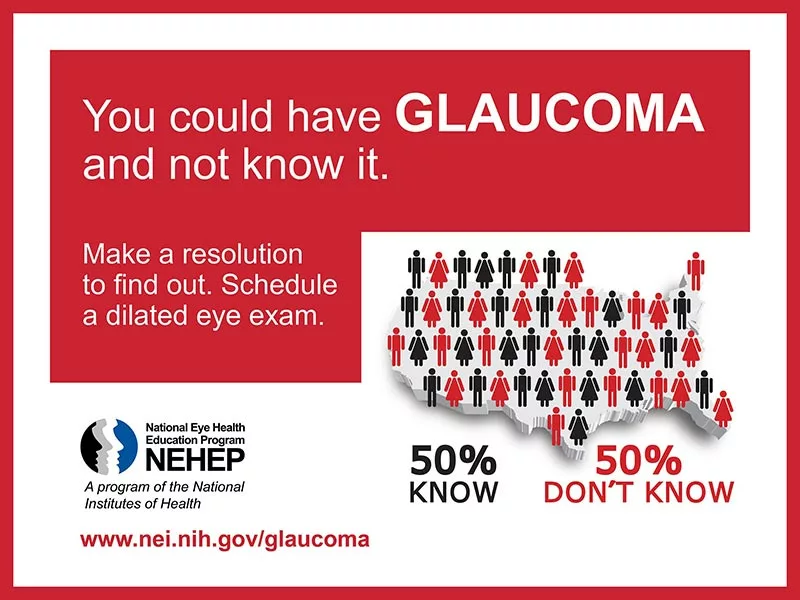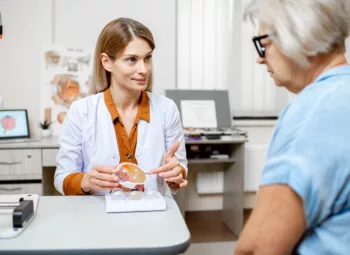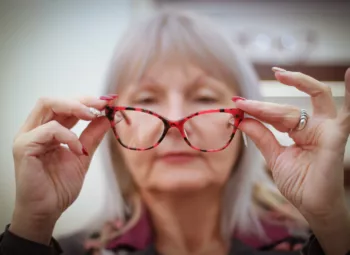
Your Guide to Glaucoma Prevention, Detection, and Treatment
Every January, the National Eye Institute (NEI) raises awareness about Glaucoma with its Glaucoma Awareness Month campaign.

Awareness is crucial in the prevention of glaucoma-caused blindness. Glaucoma affects 2.7 million people in the United States and is a leading cause of blindness throughout the world. Half of the people who have this age-related eye disease are unaware of it because it has no early symptoms. That’s what makes it a greater threat.
In this article, you will learn what Glaucoma is, who is more likely to contract it, and how to detect it, prevent it, and treat it.
What is Glaucoma?
Glaucoma, an eye disease more prevalent in older people, causes loss of peripheral (side) vision, followed by fine vision loss in the center, and, in some cases, total blindness. Glaucoma prevents the eye’s naturally produced aqueous humor fluid from draining properly, which leads to pressure inside the eye. This pressure ultimately damages the optic nerve.
Like the cable bringing packets of audio-visual information to a television screen for visual representation, the optic nerve sends visual information, gathered by our eyes, to our brains for interpretation. Damage to the nerve fibers degrades the signal, and thus the vision.
While the most common type of glaucoma is open-angle glaucoma, there are several different types of this degenerative eye disease. For more information about the four types of glaucoma and a more detailed description of how this dangerous eye disease progresses, read NeoVision Eye Centers’ glaucoma information page.
Who Gets Glaucoma?
There are a number of factors that increase the risk of glaucoma. These risk factors include:
- Age: Chronic glaucoma is uncommon below the age of 40, but affects one percent of people over this 40 and five percent over 65.
- Race: African Americans over 40 have a higher risk of contracting glaucoma, Mexican Americans over 60 are also at higher risk than other ethnic groups.
- Genetics: Glaucoma is a genetic disease, which means it often runs in families.
- Near-sightedness: People with a high degree of near-sightedness are more prone to chronic glaucoma.
- Systemic Diseases: Diabetes, anemia, and hardening of the arteries can increase the risk of developing glaucoma.
How Do I Know If I Have Glaucoma?
Since Glaucoma does not present with symptoms until vision loss is noticed, it can only be detected during a comprehensive eye exam. Following the standard visual acuity testing, your ophthalmologist will perform a variety of tests to look for the presence of glaucoma. These tests include:
- Tonometry: This test measures the fluid pressure inside the eye using a tonometer, or a handheld tonopen.
- Gonioscopy: After your eyes have been numbed with eye drops, the doctor places a special lens with mirrors directly on your eye to examine the drainage angle to ensure it is open and allowing the aqueous humor fluid to drain properly.
- Ophthalmoscopy: For a closer look at the optic nerve, the ophthalmologist will dilate (widen) the pupil. Using an ophthalmoscope, the doctor can examine the inside of your eye.
- Perimetry: This test, also known as a visual field test, measures peripheral vision. This test is commonly done without apparatus. However, if any issues are detected with a visual examination, other equipment may be used to conduct the visual field testing to get a more accurate measurement.
- 3D Imaging: Using a Heidelberg Retina Tomograph (HRT), a non-invasive, confocal, scanning, laser microscope, the doctor can get a three-dimensional, computerized scan (like a CAT scan) of the optic nerve head and retina in the posterior segment. Due to its ability to produce highly accurate and reproducible topographic images, this sophisticated technology can help diagnose early glaucoma.
Is Glaucoma Preventable?
Glaucoma cannot be absolutely prevented. The only way to prevent blindness caused by glaucoma is early detection and treatment. If not caught until symptoms are present, the damage cannot be reversed. Only further damage can be prevented.
Is Glaucoma Treatable?
Treatment for glaucoma consists of eye medication to lower the pressure in the eye, laser treatment designed to make the drain angle of the eye function more efficiently, or surgery to create a new drain angle in order to lower pressure. Many patients will not have further loss of vision if the pressure is lowered sufficiently.
Schedule a Comprehensive Eye Exam to Check for Glaucoma and other Age-related Eye Diseases at NeoVision
Early detection is the best defense against blindness caused by glaucoma. The NEI recommends that people over 40 get a comprehensive, dilated eye exam every one to two years. This increase every year, if you have multiple risk factors for glaucoma or other age-related eye conditions. Early detection of diseases can help prevent further progression and ensure the longevity of your eye and vision health.
Comprehensive Eye Exam Request
Contact our specialists at Neovision today to schedule a comprehensive eye exam to discover Glaucoma or any other serious eye diseases early.
"*" indicates required fields






